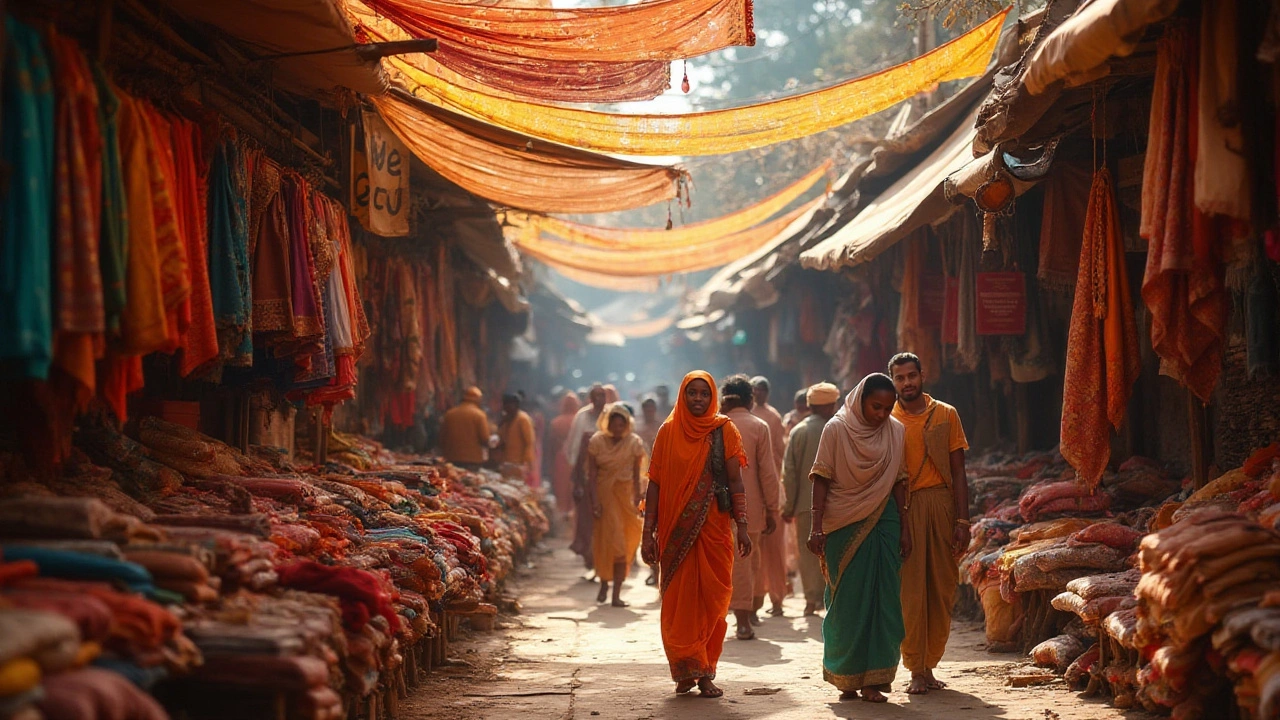Asia Textile Market: What’s Driving Growth in 2025?
If you’re hunting for the next big thing in fabrics, Asia should be at the top of your list. The region produces more than half of the world’s textiles, and the numbers are still climbing. In plain terms, that means more jobs, more exports, and more chances for a supplier like you to get a slice of the pie.
Key Growth Drivers in Asia
First, rising disposable income across China, India, and Southeast Asia fuels demand for higher‑quality apparel. Consumers are swapping cheap knock‑offs for branded, sustainable clothing. Second, government programs such as India’s “Make in India” and China’s “New Textile Industry” push factories to modernise, adopt automation, and cut waste.
Third, fast‑fashion giants keep the supply chain humming by ordering large volumes at short notice. That pushes mills to improve lead times and adopt digital design tools. Finally, a growing eco‑conscious market forces manufacturers to switch to organic cotton, recycled polyester, and low‑water dyes. Companies that can prove green credentials win contracts both locally and abroad.
Top Textile Hubs and How to Leverage Them
India’s Surat remains the fabric capital of the sub‑continent. Its cotton weaving clusters are backed by skilled labor and competitive freight rates to the Gulf and Europe. If you can partner with a Surat mill, you’ll get low‑cost, high‑quality yarns and easy access to export channels.
China still dominates synthetic fiber production, especially polyester and nylon. Provinces like Guangdong and Zhejiang host massive petro‑chemical complexes that feed textile factories directly. For synthetic‑based products, a Chinese supplier can cut lead times dramatically.
Bangladesh and Vietnam have become go‑to spots for ready‑made garments. Their labour costs are lower than China’s, and both governments offer tax holidays for textile investment. A small‑scale investor can set up a finishing unit in Bangladesh to add value to fabric imports and earn higher margins.
Pakistan’s thread and denim sectors are also worth watching. The country exports a lot of raw denim to the US and Europe, and recent upgrades in spinning technology have improved yarn quality.
To tap these hubs, start by mapping your product needs to each region’s strength. If you need organic cotton, look at Indian cooperatives. For high‑tech performance fabrics, Chinese petro‑chemical partners are the best bet. Reach out through industry forums, trade shows, or government trade agencies – they often have matchmaking services for foreign buyers.
Don’t forget the logistics side. Ports in Shanghai, Mumbai, and Ho Chi Minh City handle millions of container loads each year. Using a reputable freight forwarder can save you time and avoid hidden fees.
In short, the Asia textile market is a mix of old‑school weaving villages and high‑tech mills. The secret to success is matching your product goals with the right hub, staying on top of sustainability trends, and keeping an eye on policy incentives. Whether you’re a startup looking for a low‑cost supplier or an established brand seeking new fabrics, the opportunities are right there – you just need to take the first step.

Exploring Asia's Largest Textile Hub: India's Thriving Textile Market
Asia's largest textile market, located in India, plays a crucial role in the global textile industry. Known for its rich history and diverse offerings, India's textile industry is a powerhouse of innovation and craftsmanship. From traditional fabrics to modern production techniques, this market offers a vast spectrum of products. With an emphasis on quality and sustainable practices, it continues to dominate the textile landscape in Asia. This article delves into its dynamic nature and influential presence.
Read More